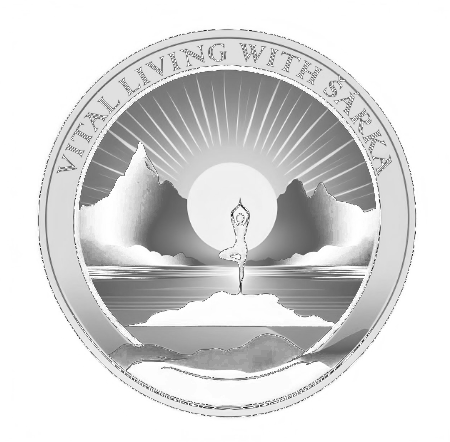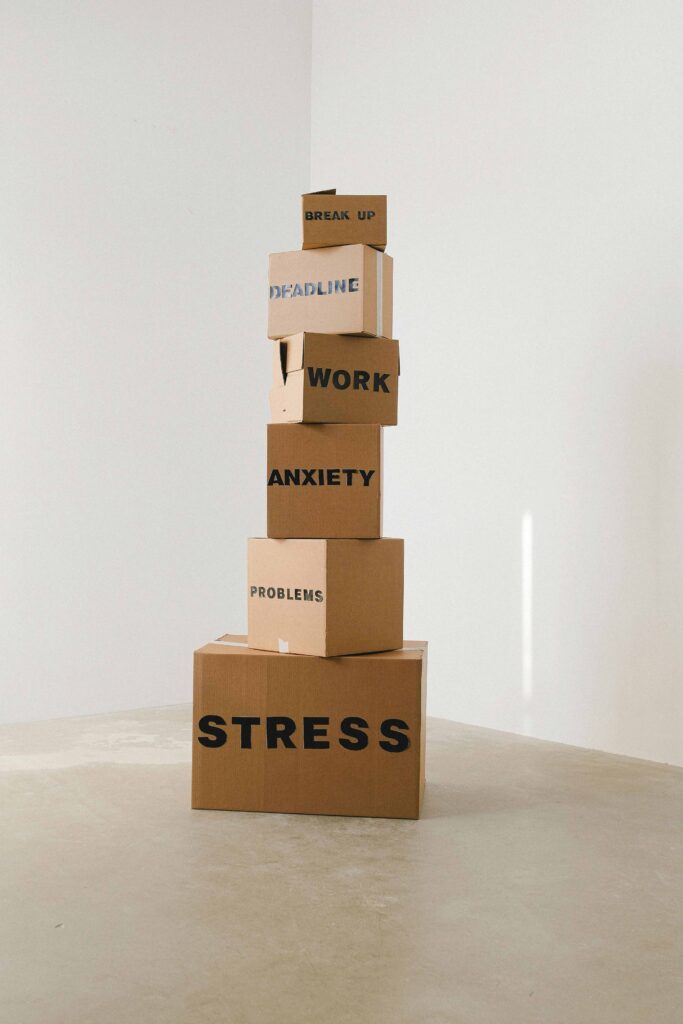If nonstop to-do lists, family obligations, and an always-on inbox have you feeling frazzled, you’re not alone. Stress is one of the most common health complaints among Canadian adults—especially busy women balancing careers, caregiving, and personal goals. The good news? You can reclaim your calm with simple, science-backed stress relief tips that fit seamlessly into everyday life.
At Vital Living, we specialize in yoga-inspired wellness, evidence-based nutrition, and holistic health coaching for women aged 30–55. Below you’ll find our definitive, SEO-optimized guide to stress management. We’ll unpack what stress does to your body, share practical tools—from mindfulness meditation to anti-inflammatory meal ideas—and show you how small, consistent changes create big results.
Why Stress Relief Matters
Chronic stress triggers elevated cortisol, which can disrupt sleep, digestion, immune function, and even skin health. Left unchecked, it may increase your risk of high blood pressure, weight gain, and anxiety disorders. Learning how to manage stress isn’t a luxury; it’s preventive healthcare.
Primary keyword: stress relief tips
Secondary keywords: stress management techniques, yoga for stress relief, mindfulness meditation, healthy lifestyle habits, nutrition for stress reduction
1. Start Your Day With Mindful Breathing (3 Minutes)
Before you reach for your phone, sit tall, soften your shoulders, and inhale deeply through the nose for a count of four. Hold for a second, then exhale for a count of six. Repeat for three minutes. This quick mindfulness meditation lowers cortisol and sets a grounded tone for the rest of your day.
Vital Living pro tip: Pair your breathing practice with a positive affirmation such as “I have time for what matters.” You’ll wire calm confidence into your nervous system before the morning rush begins.
2. Swap the Coffee Crash for Hydration + Herbal Tea
A single cup of coffee can be a mood-boosting ritual, but multiple cups spike adrenaline, leading to jitters and afternoon slumps. Aim for one quality brew, then switch to water or a caffeine-free herbal infusion such as chamomile, lemon balm, or tulsi (holy basil). Staying hydrated keeps your energy steady and your mind clear.
3. Move Your Body—But Keep Intensity in Check
High-intensity workouts have their place, yet excessive cardio can raise cortisol. Balance your week with low-impact movement that soothes the nervous system:
- Yoga for stress relief: A 20-minute slow-flow sequence or Yin yoga practice stretches tight muscles, deepens breath, and massages the vagus nerve—the body’s stress-release switch.
- Walking meetings: Swap email chains for a 15-minute walk-and-talk. Natural light helps regulate circadian rhythms, and moderate aerobic exercise prompts endorphin release.
- Mini mobility breaks: Every hour, stand up, roll your shoulders, and perform a few cat-cow stretches at your desk.
Consistency matters more than duration. Three 10-minute sessions spread through the day beat one intense hour that wipes you out.
4. Turn Your Lunch Into a Stress-Busting Plate
Foods rich in magnesium, omega-3 fatty acids, antioxidants, and B-vitamins promote neurotransmitter balance and lower inflammation:
| Nutrient | Stress-Fighting Foods | Easy Meal Idea |
|---|---|---|
| Magnesium | Spinach, pumpkin seeds, black beans | Warm lentil-spinach salad with pumpkin seed pesto |
| Omega-3s | Salmon, chia seeds, walnuts | Salmon quinoa bowl topped with walnut-dill salsa |
| Antioxidants | Berries, dark chocolate, turmeric | Berry-turmeric smoothie with coconut yoghurt |
| B-vitamins | Avocado, chickpeas, oats | Overnight oats layered with mashed avocado (yes, really—try it!) and cacao nibs |
Eating balanced meals every 4–5 hours stabilizes blood sugar, preventing the “hangry” roller-coaster that magnifies stress.
5. Embrace the 90-Second Rule for Emotional Surges
When a triggering email lands, emotions spike for about 90 seconds. If you pause—step away from your screen, breathe, or stretch—the physiological rush dissipates. Only then decide how to respond. Practicing this micro-pause keeps conflict from hijacking your mood.
6. Unplug Intentionally: The Digital Sunset
Blue light exposure after dark suppresses melatonin and keeps the mind in “alert” mode. Create a Digital Sunset one hour before bed:
- Dim overhead lights or switch to warm-hued lamps.
- Silence notifications; place your phone across the room.
- Replace scrolling with a calming routine: journal, read fiction, or try restorative yoga poses (legs-up-the-wall is magic).
Better sleep equals lower cortisol, steadier mood, and sharper focus the next day.
7. Harness Aromatherapy for Instant Calm
Scent bypasses the thinking brain and speaks directly to the limbic system. Keep an essential-oil roller in your purse or desk drawer. Favorites for stress management include:
- Lavender: Proven to lower heart rate and blood pressure.
- Bergamot: Uplifts mood, ideal for midday slumps.
- Frankincense: Deepens breath during meditation.
Roll onto wrists, temples, or inhale from cupped palms whenever tension creeps in.
8. Practice “Stress Stacking”: Pairing Habits for Maximum Impact
Habit research shows we’re more likely to adopt new behaviors when we attach them to existing routines. Instead of adding another item to your to-do list, “stack” stress relief tips onto habits you already have:
- While the kettle boils: Do 10 standing hip circles to release lower-back tension.
- After you put your child to bed: Spend five minutes journaling gratitude.
- When closing your laptop: Take three shoulder rolls and one deep sigh before leaving your desk.
These micro-doses of self-care add up to macro results.
9. Strengthen Social Connections—Even Brief Ones
Loneliness is a modern stressor often overlooked. A five-minute chat with a neighbour, sending a voice note to a friend, or attending a weekly yoga class builds oxytocin, the “bonding hormone” that counteracts cortisol. Schedule connection like any other wellness appointment.
10. Create a Personal Stress-Relief Toolkit
No single technique works 100% of the time. Build a flexible toolkit you can dip into depending on context:
- Quick fixes (under 2 minutes): Box breathing, peppermint essential oil, cold water splash.
- Mid-day resets (5–15 minutes): Desk yoga, power nap, gratitude journaling.
- Deep work (30+ minutes): Nature hike, full-length yoga class, meal prep for the week.
Write your list on a sticky note, keep it visible, and celebrate each time you choose a healthy coping strategy.
Measuring Your Progress
Use a simple daily scale: 1 = completely overwhelmed, 10 = calm and energized. Note the score in your planner before bed. Over several weeks, you should see numbers trend upward—proof that these stress management techniques work.
Conclusion: Live the Vital Living Way
Stress may be inevitable, but suffering is optional when you have practical tools rooted in holistic wellness. By integrating mindful breathing, balanced nutrition, gentle movement, and digital boundaries, you’ll cultivate resilience, boost energy, and reclaim joy.
Ready to deepen your practice? Subscribe to Vital Living on Instagram (@VitalLiving) for weekly yoga flows, anti-inflammatory recipes, and real-talk wellness tips. For personalized coaching, visit vitalliving.ca and book a free discovery call.
Your calm, healthy, vibrant life starts with one small step—take it today!
Sebastian, L.A., & Kear, T. (2024). The Effect of Lavender Aromatherapy on Heart Rate, Blood Pressure, and Perceived Stress Among Cardiac Rehabilitation Patients: A Pilot Study. Holistic Nursing Practice, 38(4), 238-244. https://doi.org/10.1097/HNP.0000000000000430 pubmed.ncbi.nlm.nih.gov
Dote-Montero, M., Carneiro-Barrera, A., Martínez-Vizcaíno, V., Ruiz, J.R., & Amaro-Gahete, F.J. (2021). Acute Effect of HIIT on Testosterone and Cortisol Levels in Healthy Individuals: A Systematic Review and Meta-Analysis. Scandinavian Journal of Medicine & Science in Sports, 31(9), 1722-1744. https://doi.org/10.1111/sms.13999 pubmed.ncbi.nlm.nih.gov
Gerritsen, R.J.S., & Band, G.P.H. (2018). Breath of Life: The Respiratory Vagal Stimulation Model of Contemplative Activity. Frontiers in Human Neuroscience, 12, 397. https://doi.org/10.3389/fnhum.2018.00397 pmc.ncbi.nlm.nih.gov
Boyle, N.B., Lawton, C., & Dye, L. (2017). The Effects of Magnesium Supplementation on Subjective Anxiety and Stress: A Systematic Review. Nutrients, 9(5), 429. https://doi.org/10.3390/nu9050429 pubmed.ncbi.nlm.nih.gov
Bafkar, N., Zeraattalab-Motlagh, S., Jayedi, A., & Shab-Bidar, S. (2024). Efficacy and Safety of Omega-3 Fatty Acids Supplementation for Anxiety Symptoms: A Systematic Review and Dose-Response Meta-Analysis of Randomized Controlled Trials. BMC Psychiatry, 24, 455. https://doi.org/10.1186/s12888-024-05881-2 pubmed.ncbi.nlm.nih.gov
West, K.E., Jablonski, M.R., Warfield, B., et al. (2011). Blue Light from Light-Emitting Diodes Elicits a Dose-Dependent Suppression of Melatonin in Humans. Journal of Applied Physiology, 110(3), 619-626. https://doi.org/10.1152/japplphysiol.01413.2009 pubmed.ncbi.nlm.nih.gov
Taylor, J.B. (2019). The 90-Second Life Cycle of an Emotion [Video]. YouTube. https://www.youtube.com/watch?v=vxARXvljKBA youtube.com
Lee, S.-H., Baldina, E., Lee, E., & Youm, Y. (2021). Social Connectedness and Hair Cortisol in Community-Dwelling Older Adults. Comprehensive Psychoneuroendocrinology, 6, 100053. https://doi.org/10.1016/j.cpnec.2021.100053 pubmed.ncbi.nlm.nih.gov
Sullivan, M.B., Erb, M., Schmalzl, L., Moonaz, S., Noggle Taylor, J., & Porges, S.W. (2018). Yoga Therapy and Polyvagal Theory: The Convergence of Traditional Wisdom and Contemporary Neuroscience for Self-Regulation and Resilience. Frontiers in Human Neuroscience, 12, 67. https://doi.org/10.3389/fnhum.2018.00067 frontiersin.org
Fincham, G.W., Strauss, C., Montero-Marin, J., & Cavanagh, K. (2023). Effect of Breathwork on Stress and Mental Health: A Meta-Analysis of Randomised-Controlled Trials. Scientific Reports, 13, 432. https://doi.org/10.1038/s41598-022-27247-y nature.com

